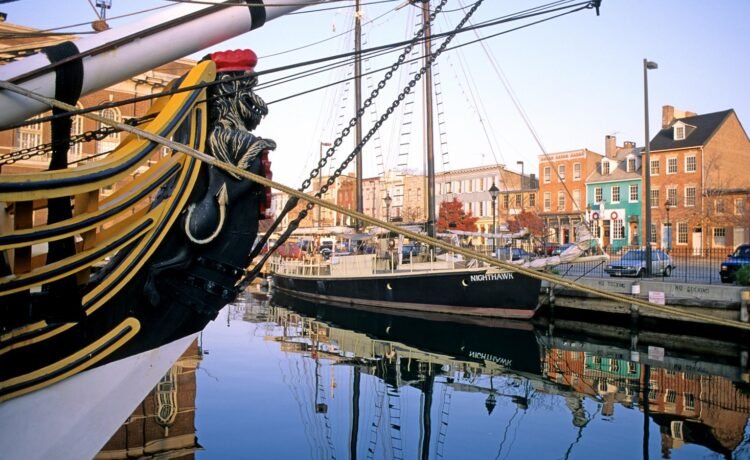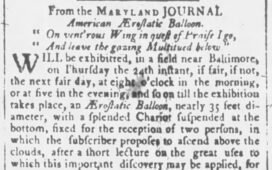Part 1 in a series on U.S. historic preservation policy and current threats
By Dr. Brenna Spray, MHT/MHAA Outreach Coordinator
In the mid-20th century, America was building fast and tearing down even faster. Entire neighborhoods and cultural landmarks vanished beneath bulldozers in the name of progress. Quaint old buildings were written off as outdated, too expensive to maintain, or just in the way. Urban renewal and highway construction gutted historic downtowns and uprooted communities, often with little thought to what was being lost.
The turning point came in 1966, when President Lyndon B. Johnson signed the National Historic Preservation Act (NHPA) into law. It marked the first time historic preservation was elevated to a coordinated national policy, rather than left to scattered local efforts and private passion projects [1].
As Congress debates the federal fiscal year 2026 budget – which will mark the 60th year of the NHPA as well as the country’s 250th anniversary – the foundational structure of historic preservation in the United States is under threat. Most Americans haven’t had cause to think about how these policies work or shape the historic places and communities they know and love, since they have endured for so long with popular support. This multi-part blog series will explain how the NHPA came into being, the role of State Historic Preservation Offices like the Maryland Historical Trust, and actions you can take to help ensure a future for Maryland’s historic sites.
A Wake-Up Call in Pink Granite
The NHPA emerged from a national reckoning over what “progress” was costing us. In 1963, New Yorkers watched in disbelief as the original Pennsylvania Station—a Beaux-Arts masterpiece of pink granite and sweeping steel arches—was demolished to make way for Madison Square Garden.
The backlash was fierce. Critic Ada Louise Huxtable mourned the loss in The New York Times, stating that the city wanted and deserved “tin-can architecture in a tin-horn culture” [2]. Penn Station’s demolition resulted in the passage of New York City’s 1965 Landmark Law, which created the local Landmarks Preservation Commission and allowed the city to designate historic properties and regulate changes, including demolition, for the first time.
Beyond New York, the loss of Penn Station showed the nation that no historic place, however beautiful and magnificent, was safe from development pressures. The grief it stirred helped launch a modern preservation movement that created protections for the places that tell America’s story.
With Heritage So Rich
In 1964, prompted by the widespread devastation of historic sites, a group of historic preservation advocates came together to try to create a new federal framework to support America’s cultural heritage. They travelled to Europe, researched laws and practices, and built a coalition of elected officials, including the US Conference of Mayors. In 1966, the National Trust for Historic Preservation produced With Heritage So Rich, a report by the US Conference of Mayors’ Special Committee on Historic Preservation, outlining the findings of this group and proposing an enhanced legal structure for historic preservation in the United States. This report informed and ultimately resulted in the passage of the NHPA.
What the NHPA Set in Motion
The NHPA created the foundation for historic preservation as we know it by:
These weren’t symbolic moves. They created a legal and financial framework that still shapes our cities, towns, and rural landscapes.
What might have been lost in Maryland? One example is the Fells Point Historic District in Baltimore City. A planned highway in the 1960s would have flattened this historic harbor district home to shipbuilders, longshoremen, and some of the oldest buildings in Baltimore. Thanks to preservation protections, the community fought back—and won. Today, Fells Point’s cobblestone streets and waterfront rowhouses are a vibrant part of the city [3].
Still Evolving, Still Essential
Nearly 60 years on, the NHPA continues to do its job, even as the job grows harder. Development pressures are rising and climate change threatens vulnerable sites. Historic and cultural sites related to communities underrepresented in the historic record – for example, African Americans, Native Americans, or the LGBTQ community – were not commonly documented in the first decades of historic preservation practice, leaving those places and those histories more at risk for loss or development. As the practice has evolved to research more of American history and tell more accurate stories, the federal framework – and funding – has helped ensure that those benefits accrue broadly, across the country.
Maryland continues to try and push ahead on all fronts: using preservation tax credits and grants to invest in our historic buildings, participating in community-driven documentation, and weaving climate resilience into planning. Section 106 reviews have helped ensure that major projects account for the past and invite public input into the development decision making process.
Preservation is about recognizing that places matter. Our built environment holds memory, identity, and meaning and that’s worth fighting for. So, the next time you stroll past a centuries-old tavern or a former church turned community center, remember: it didn’t survive by accident. It was preserved, because people like you decided it mattered.
Stay tuned for Part 2: how Maryland took this national mandate and built one of the strongest state preservation programs in the country!
References
[1] Barry Mackintosh, The National Historic Preservation Act and the National Park Service: A History, Washington, DC: Department of the Interior, 1986. https://npshistory.com/publications/national-historic-preservation-act.pdf.
[2] A. L. Huxtable, “Farewell to Penn Station,” The New York Times, Oct. 30, 1963.
[3] R. F. Weingroff, “The D.C. Freeway Revolt and the Coming of Metro – Part 7: Getting Construction Underway,” U.S. Dept. of Transportation. https://highways.dot.gov/highway-history/general-highway-history/dc-freeway-revolt-and-coming-metro.
Discover more from Our History, Our Heritage
Subscribe to get the latest posts sent to your email.























